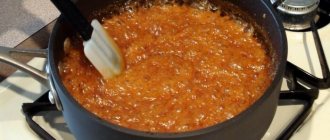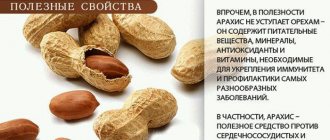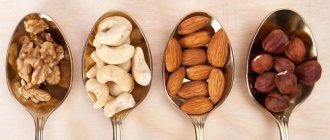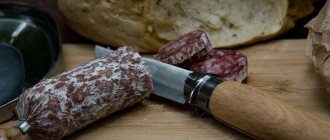How many grams are in a tablespoon of bran?
1 tablespoon contains 6 grams of bran.
with a small “slide” or 5 grams without a slide
Bran is a food product that has become widespread relatively recently, but has already gained quite serious popularity. It is worth noting, first of all, that bran is not a medicine, it is a food product that is necessary for people who take care of their health. And bran should be consumed in a certain amount.
One tablespoon contains 7 grams of bran.
Enough is already known about the benefits of bran (both rye and wheat). The main question remains: “How and with what to use them?” Most lovely ladies prefer to add them to first courses. All kinds of soups, borscht and broths only benefit from such “cooperation”. Bran can also be consumed with various dairy products: kefir, yoghurt, curdled milk or even milk. All of the above variations are very, very nutritious and low in calories. Isn’t this the kind of diet each of us strives for?
Obviously, the answer to the question “How many grams of bran are in a tablespoon?” will allow you to make your diet varied, healthy and nutritious. And this cannot but affect your appearance. Be healthy and beautiful!
Let's learn how to cook tasty and healthy!
Tablespoon volume
1 TABLESPOON filled “without top”/“with top” contains (weighs in grams): water, vinegar - 18/- g milk - 20/- g vegetable oil - 17/- honey - 25/- sugar - 20 /25 g salt - 25/30 gr. flour, cocoa, coffee - 10/15 g rice - 15/20 g ground nuts, gelatin - 10/15 g. dry grass - 5/10 g wheat and oat bran - 6/12 g fresh grass (chopped leaf) - 10/15 g
1 TEA SPOON (filled “without a slide” / “with a slide”, at normal humidity) contains gr.: water - 5/- g (gram) milk - 5/- g vegetable oil - 5/- g sour cream 30%, condensed milk , honey, tomato paste - -/10g sugar, sorbitol, xylitol, ground crackers - 5/7 g, salt, baking soda - 7/10 g flour, cocoa, ground coffee - 4/5 g rice - 5/8 g
How to use bran correctly: the opinion of nutritionists, nuances, recipes
American nutritionists believe that a modern person should consume at least 25 grams of dietary fiber daily. This amount is not difficult to gain if you use bran correctly - it is a natural and completely safe source.
For many centuries in a row, people peeled the grain from the shell before grinding it into bread or cooking porridge.
There were many reasons for this: flour with a large amount of bran quickly went rancid due to the high content of polyunsaturated fatty acids, brown rice was poorly stored and soon began to be considered low-grade.
In short, until the middle of the last century, bran was considered a cheap waste from grain production, suitable at best for livestock feed, despite the high content of vitamins, microelements and protein.
Everything changed when nutritionists noticed that there was too little natural fiber or dietary fiber left in the food of modern residents of developed countries.
Meanwhile, consuming them is necessary for normal intestinal function, not only stimulating peristalsis, but also maintaining the correct balance of microflora necessary for the synthesis and absorption of vitamins and other nutrients. Dietary fiber contained in bran:
- prevent constipation by accelerating the transit of food through the intestines;
- normalize the state of microflora in the intestinal lumen;
- protect against cardiovascular problems;
- help maintain normal sugar levels;
- help control appetite and body weight;
- promote weight loss;
- protect against intestinal cancer [1].
Having paid attention to the benefits of dietary fiber, doctors discovered that bran is not only an inexpensive source, but also a product with independent value. They are rich in B vitamins, necessary for the normal functioning of the nervous system, and contain microelements, proteins, and antioxidants. And if one can still argue about the absorption of minerals, since most often they are associated with phytic acid, which prevents the absorption of microelements, then the benefits of the remaining components are obvious.
Dietary fiber is especially necessary in such an important matter for many as losing weight and maintaining a normal weight. American nutritionists believe that the obesity epidemic is associated with a lack of fiber in food [2]. And adding just 14 g of bran to 2 or more meals allows you to lose half a kilo a month without restricting yourself in food at all [3].
[1] J. Slavin. Fiber and Prebiotics: Mechanisms and Health Benefits.Nutrients. 2013. [2] Slavin JL. Dietary fiber and body weight. Nutrition. 2005. [3] Howarth NC, Saltzman E, Roberts SB. Dietary fiber and weight regulation. Nutr Rev. 2001.
What are the benefits of different bran?
Insoluble dietary fiber, wheat bran, protects the intestinal mucosa from cancer. It has been proven that regular consumption of foods containing such fibers reduces the likelihood of developing colon cancer by 40% [1]. They speed up the passage of food through the intestines and promote weight loss.
If insoluble dietary fiber predominates in wheat bran, then in oat bran
About a third of the fiber contained is beta-glucan. When combined with water, beta-glucan forms a viscous gel in the intestine, which regulates the absorption of various substances:
- prevents a sharp jump in blood sugar after eating [2];
- increases the secretion of bile acids, the final product of cholesterol metabolism in the body [3];
- due to the increased excretion of bile acids, both the total level of blood cholesterol and the level of low-density lipoproteins known as “bad” cholesterol decreases [4].
Barley seeds also have similar properties - when consumed regularly, they reduce cholesterol levels in the blood plasma.
bran [5].
Rye
Bran increases the duration of satiety and allows you to eat less during the day.
In one American study conducted on healthy men, it was found that if you add them to minced pork for meatballs (in the amount of 4.7 g for every 100 g), the dish will seem more satisfying, and the man will eat 15% less for the rest of the day [ 6].
In addition, scientists discovered that rye bran can slow down the development of prostate cancer - adding it to the food of people who received conservative treatment accelerated the destruction of tumor cells [7].
But, of course, it is too early to talk about the wonderful properties of rye based on a pilot study - further work is underway. Just in case, we repeat: patients not only consumed rye bran, but were also treated for cancer using the methods of official medicine, without replacing one with the other.
Rice
bran contains vitamins B1, B6, B12. They reduce the amount of blood lipids (though not as actively as oatmeal [8]), but, most importantly, they are able to bind heavy metals [9] and toxic metabolic products.
In short, there are no equal benefits from “bran in general”; their effect on the body varies depending on the origin. So that any of our customers can choose a product based on the needs of their own body, we have developed a line of products, collecting all the beneficial properties of bran in combination with a variety of tastes.
When can bran cause harm?
But, despite all the undoubted benefits of bran, their thoughtless use can also be harmful to health.
They are contraindicated during any acute inflammation of the gastrointestinal tract: gastritis, enteritis, enterocolitis.
Coarse fiber irritates the inflamed mucous membrane, so during an exacerbation the most correct thing is to remove bran from the diet, gradually introducing it again after the acute process subsides.
They should absolutely not be taken in case of aggravated ulcers of the stomach and duodenum, or nonspecific ulcerative colitis (Crohn's disease).
It is necessary to introduce fiber into food with extreme caution in case of intestinal adhesive disease: excess load can cause constipation and intestinal obstruction.
In this case, it is better to start by adding bran to dishes during cooking, and only then, if well tolerated, start eating them “in their pure” form
[1] Bingham SA, Day NE, Luben R. Dietary fiber in food and protection against colorectal cancer in the European Prospective Investigation into Cancer and Nutrition (EPIC): an observational study. Lancet. 2003. [2] Wood PJ, Braaten JA, Scott FD, Riedel KD, Wolynetz MS, Collins MW. Effect of dose and modification of viscous oat gum on plasma glucose and insulin following an oral glucose load. British J Nutrition. 1994. [3] Lia A˚, Hallmans G, Sandberg AS, Sundberg B, A˚man P, Andersson H. Oat b-glucan increases bile acid excretion and a fiber-rich barley fraction increases cholesterol excretion in ileostomy subjects. Am J Clin Nutr 1995. [4] Braaten TJ, Wood PJ, Scott FW, Wolynetz MS, Lowe MK, Bradley Whyte P. Oat b-glucan reduces blood cholesterol concentration in hypercholesterolemic subjects. Eur J Clin Nutr 1994. [5] McIntosh GH, Whyte J, McArthur R, Nestel PJ. Barley and wheat foods influence on plasma cholesterol concentrations in hypercholesterolemic men. Am J Clin Nutr 1991. [6] U. Kehlet, J. Kofod, J. Holst, et al. Addition of Rye Bran and Pea Fiber to Pork Meatballs Enhances Subjective Satiety in Healthy Men, but Does Not Change Glycemic or Hormonal Responses: A Randomized Crossover Meal Test Study. The Journal of Nutrition, Sept. 2021 [7] Bylund, A, Lundin, E,; Zhang, J. X. et al. Randomized controlled short-term intervention pilot study on rye bran bread in prostate cancer. European Journal of Cancer Prevention 2003. [8] L. Cara, C. Dubois, P. Borel, et al. Effects of oat bran, rice bran, wheat fiber, and wheat germ on postprandial lipemia in healthy adults. Am JC/in Nutr 1992. [9] G. Hu, S. Huang, H. Chen, F. Wang. Binding of four heavy metals to hemicelluloses from rice bran. Food research international, 2010.
How to use bran correctly
You need to introduce bran into your diet gradually - since our food contains very little natural dietary fiber, the body needs to be given time to get used to it.
It is strictly forbidden to act according to the principle “you can’t spoil porridge with butter” (which ladies who are determined to lose weight quickly are especially guilty of) - this way you will neither lose weight nor improve your health, but constipation, bloating and abdominal pain will be the inevitable consequences of excessive zeal.
The initial dose is no more than 2-3 tablespoons or 10 - 15 grams per day.
Bran requires a lot of liquid. It is by contacting water and increasing the volume by 2-3 times that dietary fiber acquires its beneficial properties.
A lack of fluid will cause dietary fiber to “take” it from the intestinal contents, causing constipation instead of normalizing motility.
It is better to prepare non-granulated bran in advance: “steam” it with boiling water or hot broth, or mix it with milk, yogurt, kefir and let it brew, thus turning it into a proper and healthy breakfast.
In the same way, instead of breakfast cereal, you can use Lito granulated bran in various flavors. Many people add them instead of croutons to soups and salads - in the latter case, again, you need to remember about a sufficient volume of liquid.
If the body normally accepts the first portions of bran - there is no bloating, constipation, or pain - you can gradually increase the portions, bringing them to 2-3 tablespoons 3 times a day. The maximum permissible dosage for weight loss or cleansing the body is 60 grams (12 tablespoons per day).
In such quantities, bran can be consumed from 4 to 12 weeks in a row, during which time the results were obtained in most of the studies mentioned. After which it is better to reduce the dosage to 25 grams per day recommended by doctors, and use it constantly as a component of proper nutrition.
Many people are forced to take medications for life. Since bran is a natural sorbent, the break between meals with this supplement and the medicine should be at least 2 hours.
Or take the medicine on an empty stomach no later than half an hour before meals.
If the drugs include drugs to normalize intestinal motility (for constipation or diarrhea), it would be best to consult a doctor and adjust the dose, and perhaps even stop them altogether.
Recipes for proper nutrition
Bran can be eaten not only as an independent dish, but also added to porridges, casseroles, and minced meat dishes.
By the way, 3 - 4% of bran by weight of minced meat will not only enrich the finished cutlets, meatballs or meatballs with dietary fiber, but will also make them softer and juicier, retaining moisture during cooking.
It is recommended to add bran to the breading to, again, retain all the juices inside the dish. And by adding them to flour, you can make baked goods healthy and less high in calories.
Here are several recipes for preparing delicious and healthy dishes (the weight of the ingredients is calculated for 1 serving):
Pumpkin casserole with rice.
Grate 120 g of pumpkin on a coarse grater. Boil 30 g of rice until half cooked. Mix pumpkin, rice, add 10 g bran and 30 ml water, add salt. Bake in the pan for 25 - 30 minutes, then brush with sour cream and return to the oven until golden brown.
Vegetable pudding.
Cut 1 potato into cubes. Grate 1 carrot on a coarse grater. Add 10 g bran and 80 g cauliflower florets. Add salt and cook in the oven for 20-25 minutes.
Pancakes made from cottage cheese and bran.
Mix 2 tablespoons of bran, 1.5 tbsp. l. soft low-fat cottage cheese, 1 chicken egg. Fry in a preheated non-stick frying pan, pouring at once or dividing into 2 pancakes (depending on your preferred portions) until golden brown.
Potato and bran cutlets.
Pour 40 g of bran into 40 ml of milk and let stand for 15-20 minutes. Boil 200 g of potatoes in their skins, peel and crush. Add 10 g to the puree.
butter, 1 egg and prepared bran, mix well, salt to taste. You can add onions fried until transparent (to taste). Form 3 cutlets, roll in 10 g.
bran (breading)), cook in a frying pan or in the oven
Summing up
Bran is a healthy and wholesome food, a source of dietary fiber, vitamins, proteins and antioxidants. But in order for them to retain their benefits, you need to know how to use bran correctly:
- introduce into the diet, starting from 10 - 15 g per day;
- with normal tolerance, increase the amount over 2-3 weeks to a maximum of 60 g in 3 doses;
- the duration of the “body cleansing” course is from 1 to 3 months, after which the dosage of bran must also be gradually reduced;
- for preventive purposes, you can consume 25 g of bran per day throughout your life;
- Taking bran must be accompanied by drinking liquid.
Correct and rational use of bran will help not only maintain health, but also diversify your diet.
Subscribe to our channel and be the first to read the most interesting materials!
Source: https://zen.yandex.ru/media/id/592fbaede3cda8c8f17c66cc/5a41e831c5feaf1ea16b8a17
CALORIE CONTENT OF BRAN AND THEIR USEFUL PROPERTIES
Today no one doubts the need for a healthy diet, so the dietary supplement in the form of bran is breaking records of popularity among people who said a decisive “No!” excess weight and illness. With a large amount of biologically active substances, bran is a low-calorie product, so it is indispensable in the diet. Mostly wheat, rye and oat bran are sold in stores and on the market. Buckwheat, corn, barley, rice, flax and other types of bran are less common, but they are also very beneficial for the human body. The low calorie content of bran combined with high nutritional characteristics make this supplement extremely popular.
WHAT IS BRAN USEFUL FOR?
For the normal functioning of the gastrointestinal tract, coarse fibers (fiber) are necessary. They are found in foods of plant origin. Bran is the hard shell of the grain and is therefore rich in coarse dietary fiber. Fiber is not digested by digestive enzymes, having a beneficial effect on the microflora of the large intestine. Bran creates the illusion of satiety. Once in the stomach, they absorb liquid and swell, increasing in volume. The calorie content of bran is low, so regular consumption of this product not only normalizes intestinal function and improves metabolism, but also helps you lose weight without compromising your health. Regardless of the type of grain, bran helps remove “bad” cholesterol and toxins from the body. It has been observed that regular and correct intake of this dietary supplement leads to a decrease in blood sugar levels. In addition to fiber, bran contains vitamins, microelements, amino acids and other substances beneficial to the human body.
How much does a teaspoon of bran weigh?
When people start talking about healthy eating, bran is almost one of the first foods they remember. A lot has been said about the benefits of bran: the fact that it is healthy fiber, and that it is necessary for the functioning of the intestines, and that it removes harmful substances from the body, helps fight appetite, in addition, it contains a lot of useful substances, which is why bran is especially indicated vegetarians and fasting people.
Bran is the outer layer of the grain; If it is not separated, then the flour from such grains quickly goes rancid*. Primarily because of this “defect,” at the turn of the 19th and 20th centuries, bran almost completely disappeared from the diet of residents of industrialized regions. And only in our time, bran is returning to the diet. True, it is still only as an additive to a healthy diet, and not as a complete product.
*By the way, please note: the shelf life of whole grain flour cannot be long.
It is necessary to distinguish between simple bran and granulated bran.
Home page > Articles
Author's project for those who strive to be slim
What you need to know about granulated bran:
Join the discussion!
Ask questions and share your opinion:
(c) Maria Verchenova
At a reprint of materials the reference to the site is required
Save the article to your wall and share with friends in popular channels:
Other articles that may interest you:
Random article >>>
Julia, 05/28/17:
Food for hamsters :))))) Funny :))))))
In this article I will specifically focus on granulated bran. My family calls them “hamster food” - what else could you call crunchy brown balls with a faint nutty smell?
Bran and liquid Bran must be taken with liquid - milk, yogurt, kefir, juices, broth, etc. Otherwise, they simply will not swell and will not give the desired effect - your body will not receive the very fiber for which it is worth eating bran.
Introduce bran into the diet gradually Bran should be introduced into the diet gradually, starting with two to three tablespoons per day (this is approximately 15 grams). You can’t just bring home a pack and eat it while watching an educational film series in English. Otherwise, increased gas formation occurs, possibly a feeling of heaviness in the abdomen, mild constipation and other unpleasant, but not fatal, symptoms. Over time they pass, but it is better and more productive without them.
Then you can add a spoonful per day, gradually increasing to 60 g per day. Sometimes manufacturers write on the packaging what the maximum volume is allowed per day - pay attention to their recommendations.
If there is a break in taking bran for 3 weeks or more, then you need to reintroduce it into your diet, starting with 2-3 spoons. However, if your diet already contains a lot of fiber, i.e. raw vegetables and unprocessed cereals, then you can stay on these 2-3 spoons.
Bran and calcium Bran, or rather fiber, enters the intestines and begins to “cleanse” our body. This means that the binding of various substances that enter the intestines with food or as waste material prepared for excretion occurs. Calcium ions “bind” and leave the body most easily. Therefore, if you do not add calcium-containing supplements and preparations to your diet along with bran, calcium that entered the body with regular foods will begin to be excreted. In other words, calcium deficiency may occur. It should be noted that a number of manufacturers add calcium directly to the bran. Moreover, the composition is balanced in such a way as to maximally compensate for the “binding” of calcium. Therefore, it is useful to look at the composition indicated on the package. Or read additional materials on the manufacturer’s website.
Contraindications Naturally, bran is contraindicated for people with acute gastrointestinal diseases, gastric and duodenal ulcers in the acute stage, as well as a number of other diseases. Manufacturers usually indicate a list of contraindications on the packaging - check it every time, even if you have been using this brand for a long time, because the recipe may have changed.
Variety of flavors Some manufacturers produce bran with different additives and flavors. On the one hand, this is good - you can choose your favorite, or try a new one every time, enjoying the variety. On the other hand, it is important to check the composition and contraindications for each option. For example, a manufacturer produces bran with “Apple” and “Cranberry” flavors. If only an apple is added to the “Apple” bran, then to the “Cranberry” bran it is quite possible to add cranberries and sugar. This means that such bran is already contraindicated for people suffering from diabetes.
Bran production Granulated bran is produced by extrusion. This is when a certain mass is heated in several stages to a high temperature, approximately 120-150 degrees, and then, under high pressure, the hot mass is “spitted out” from the extruder through the molding head into a low-pressure area. From such a drop, a small droplet of a dense mass breaks and becomes large and fluffy, i.e. loose. Then, if necessary, the resulting pads are dried or even fried. Corn sticks are made approximately according to this principle - see video. Only in the case of bran, of course, they are not doused with oil and sprinkled with powdered sugar.
How delicacies are made using the extrusion method. Using corn sticks as an example
On the one hand, the extrusion process is good because it uses a minimal amount of oil and initially uses only natural ingredients. On the other hand, there is still debate as to how neutral this process is for our food, because Under the influence of temperature and pressure, various changes occur in the biochemical properties of the starting products. For example, protein denaturation definitely takes place (instead of amino acids we get a set of microelements) or starch dehydration (a change in its structure).
If you don’t have to worry too much about proteins (after all, we’re talking about bran, and there are basically few proteins there), then starch dehydration can play a cruel joke. For example, this increases the glycemic index of our bran, and here we need to keep our eyes open. In addition, the processes occurring in the starting products during extrusion have not yet been fully studied. It’s unlikely that we can expect anything super-harmful there, but until we know all the risks, we shouldn’t get carried away with “hamster food.”
Thus, it turned out that even such a product as bran is subject to the golden rule: everything is good, but in moderation. In this regard, for myself, I defined granulated bran as a delicacy - i.e. sometimes a little bit, and not every day in packs :))))
How you can use granulated bran:
- Crackers for salad (see recipe example at the end of the article)
- Low-calorie alternative to cookies
- Ready-made breakfast with the obligatory addition of milk or juice
- Option for a snack on the road. Here bran is especially good, because... do not require special storage conditions. This means that on the road they will not deteriorate, will not turn black, and will not spill. At the same time, the snack bag will be quite light, and the feeling of fullness will be quite comfortable. Well, besides, it’s convenient to eat on the go (doesn’t get your hands dirty) and even in the car (doesn’t crumble).
- Partial or complete replacement of bread
- Crackers for puree soups and broths
By the way, bran is good because it is unpretentious in terms of storage and transportation. Therefore, it is not necessary to go shopping in search of the “correct” bran; you can order delivery. Especially for such cases, I have prepared a selection of decent bran in the famous online store Ozon.ru.
Recipe for Rainbow salad with croutons
- fresh spinach
- sweet pepper 3 colors
- any greens (dill, parsley, cilantro)
- chicken meat or chicken hearts (you can also use boiled tongue or shrimp)
- granulated bran instead of crackers
Everything is washed, cut, put in a salad bowl, and topped with dressing. For dressing, olive oil mixed with lemon juice is used. As a decoration according to your mood, you can sprinkle with sesame or pomegranate seeds.
It turns out to be a light salad with a good amount of protein and healthy fats - ideal for a stand-alone dinner or second breakfast.
Bon appetit!
BRAN CALORIES
It is useful for those who are losing weight to know that the number of calories in bran depends on the type of cereal. Oat bran has the lowest calorie content - only 110 kcal. The second position in this ranking belongs to rye bran – 190 kcal. Third place goes to flax bran – 250 kcal. Corn and wheat bran are approximately the same in calorie content - 293 kcal and 296 kcal, respectively. They are followed by rice bran - 316 kcal, and buckwheat - 365 kcal. Despite the difference in numbers, all bran is beneficial for the body. Which one to choose is an individual question. The consumer pays attention not so much to the calorie content of bran, but to its taste. Manufacturers produce bran in the form of granules, powder, crispbread, crackers, etc.
HOW TO TAKE BRAN?
When consuming bran for the purpose of health improvement and weight loss, it is necessary to take it correctly.
- During the day, every day, you need to eat at least 100 g of the product, dividing it into equal portions. If you are obese, these portions can be increased.
- Bran should be washed down with water or kefir (1%) - this is important!
- To avoid disruptions in the gastrointestinal tract, it is better to start consuming bran in small doses - no more than two tablespoons per day. Gradually, over the course of a week, the dosage is increased to the maximum.
People with gastrointestinal problems should take bran with caution and be sure to consult a doctor.
How much does a teaspoon of bran weigh?
When people start talking about healthy eating, bran is almost one of the first foods they remember. A lot has been said about the benefits of bran: the fact that it is healthy fiber, and that it is necessary for the functioning of the intestines, and that it removes harmful substances from the body, helps fight appetite, in addition, it contains a lot of useful substances, which is why bran is especially indicated vegetarians and fasting people.
Bran is the outer layer of the grain; If it is not separated, then the flour from such grains quickly goes rancid*. Primarily because of this “defect,” at the turn of the 19th and 20th centuries, bran almost completely disappeared from the diet of residents of industrialized regions. And only in our time, bran is returning to the diet. True, it is still only as an additive to a healthy diet, and not as a complete product.
*By the way, please note: the shelf life of whole grain flour cannot be long.
It is necessary to distinguish between simple bran and granulated bran.
Home page > Articles
Author's project for those who strive to be slim
What you need to know about granulated bran:
Join the discussion!
Ask questions and share your opinion:
(c) Maria Verchenova
At a reprint of materials the reference to the site is required
Save the article to your wall and share with friends in popular channels:
Other articles that may interest you:
Random article >>>
Julia, 05/28/17:
Food for hamsters :))))) Funny :))))))
In this article I will specifically focus on granulated bran. My family calls them “hamster food” - what else could you call crunchy brown balls with a faint nutty smell?
Bran and liquid Bran must be taken with liquid - milk, yogurt, kefir, juices, broth, etc. Otherwise, they simply will not swell and will not give the desired effect - your body will not receive the very fiber for which it is worth eating bran.
Introduce bran into the diet gradually Bran should be introduced into the diet gradually, starting with two to three tablespoons per day (this is approximately 15 grams). You can’t just bring home a pack and eat it while watching an educational film series in English. Otherwise, increased gas formation occurs, possibly a feeling of heaviness in the abdomen, mild constipation and other unpleasant, but not fatal, symptoms. Over time they pass, but it is better and more productive without them.
Then you can add a spoonful per day, gradually increasing to 60 g per day. Sometimes manufacturers write on the packaging what the maximum volume is allowed per day - pay attention to their recommendations.
If there is a break in taking bran for 3 weeks or more, then you need to reintroduce it into your diet, starting with 2-3 spoons. However, if your diet already contains a lot of fiber, i.e. raw vegetables and unprocessed cereals, then you can stay on these 2-3 spoons.
Bran and calcium Bran, or rather fiber, enters the intestines and begins to “cleanse” our body. This means that the binding of various substances that enter the intestines with food or as waste material prepared for excretion occurs. Calcium ions “bind” and leave the body most easily. Therefore, if you do not add calcium-containing supplements and preparations to your diet along with bran, calcium that entered the body with regular foods will begin to be excreted. In other words, calcium deficiency may occur. It should be noted that a number of manufacturers add calcium directly to the bran. Moreover, the composition is balanced in such a way as to maximally compensate for the “binding” of calcium. Therefore, it is useful to look at the composition indicated on the package. Or read additional materials on the manufacturer’s website.
Contraindications Naturally, bran is contraindicated for people with acute gastrointestinal diseases, gastric and duodenal ulcers in the acute stage, as well as a number of other diseases. Manufacturers usually indicate a list of contraindications on the packaging - check it every time, even if you have been using this brand for a long time, because the recipe may have changed.
Variety of flavors Some manufacturers produce bran with different additives and flavors. On the one hand, this is good - you can choose your favorite, or try a new one every time, enjoying the variety. On the other hand, it is important to check the composition and contraindications for each option. For example, a manufacturer produces bran with “Apple” and “Cranberry” flavors. If only an apple is added to the “Apple” bran, then to the “Cranberry” bran it is quite possible to add cranberries and sugar. This means that such bran is already contraindicated for people suffering from diabetes.
Bran production Granulated bran is produced by extrusion. This is when a certain mass is heated in several stages to a high temperature, approximately 120-150 degrees, and then, under high pressure, the hot mass is “spitted out” from the extruder through the molding head into a low-pressure area. From such a drop, a small droplet of a dense mass breaks and becomes large and fluffy, i.e. loose. Then, if necessary, the resulting pads are dried or even fried. Corn sticks are made approximately according to this principle - see video. Only in the case of bran, of course, they are not doused with oil and sprinkled with powdered sugar.
How delicacies are made using the extrusion method. Using corn sticks as an example
On the one hand, the extrusion process is good because it uses a minimal amount of oil and initially uses only natural ingredients. On the other hand, there is still debate as to how neutral this process is for our food, because Under the influence of temperature and pressure, various changes occur in the biochemical properties of the starting products. For example, protein denaturation definitely takes place (instead of amino acids we get a set of microelements) or starch dehydration (a change in its structure).
If you don’t have to worry too much about proteins (after all, we’re talking about bran, and there are basically few proteins there), then starch dehydration can play a cruel joke. For example, this increases the glycemic index of our bran, and here we need to keep our eyes open. In addition, the processes occurring in the starting products during extrusion have not yet been fully studied. It’s unlikely that we can expect anything super-harmful there, but until we know all the risks, we shouldn’t get carried away with “hamster food.”
Thus, it turned out that even such a product as bran is subject to the golden rule: everything is good, but in moderation. In this regard, for myself, I defined granulated bran as a delicacy - i.e. sometimes a little bit, and not every day in packs :))))
How you can use granulated bran:
- Crackers for salad (see recipe example at the end of the article)
- Low-calorie alternative to cookies
- Ready-made breakfast with the obligatory addition of milk or juice
- Option for a snack on the road. Here bran is especially good, because... do not require special storage conditions. This means that on the road they will not deteriorate, will not turn black, and will not spill. At the same time, the snack bag will be quite light, and the feeling of fullness will be quite comfortable. Well, besides, it’s convenient to eat on the go (doesn’t get your hands dirty) and even in the car (doesn’t crumble).
- Partial or complete replacement of bread
- Crackers for puree soups and broths
By the way, bran is good because it is unpretentious in terms of storage and transportation. Therefore, it is not necessary to go shopping in search of the “correct” bran; you can order delivery. Especially for such cases, I have prepared a selection of decent bran in the famous online store Ozon.ru.
Recipe for Rainbow salad with croutons
- fresh spinach
- sweet pepper 3 colors
- any greens (dill, parsley, cilantro)
- chicken meat or chicken hearts (you can also use boiled tongue or shrimp)
- granulated bran instead of crackers
Everything is washed, cut, put in a salad bowl, and topped with dressing. For dressing, olive oil mixed with lemon juice is used. As a decoration according to your mood, you can sprinkle with sesame or pomegranate seeds.
It turns out to be a light salad with a good amount of protein and healthy fats - ideal for a stand-alone dinner or second breakfast.
Bon appetit!
And treat yourself to healthy treats more often!
Maria Verchenova:
Yes, Julia :))) I’m glad I made you smile :)))) Food should be taken in a positive mood :)))))
Galina, 05/28/17:
And I kept wondering how the bran is glued into such sticks. Thank you for telling and showing! Now I know.
Maria Verchenova:
Galina, you're always welcome! This is why we work, to tell interesting things about nutrition and products. Come back often :)))
By the way, you don’t have to wait for an article from me. If you want to know something about the products, you can ask in the Consultation or through the feedback form on the site pages. I would be glad to write a new article on a topic that interests you!










